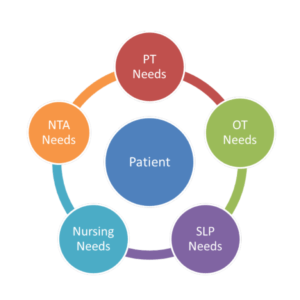Looking for a miracle
Once again, Congress is playing Russian roulette with Medicare beneficiaries and the physicians who care for them. Come March 31, unless Congress intervenes, Medicare physicians will be slapped with an overall 21.2 percent pay cut for their services.
It’s the same old story that has been happening for years, and whether it will play out any differently with this Republican-controlled Congress remains to be seen. But hanging in the balance is the ability of physicians across the nation to continue accepting and treating Medicare patients.
At the same time that the 2014 temporary “doc fix” runs out, the temporary exception enacted by Congress last year to permit therapy services to be furnished above Medicare cap limits also runs out, so if that is to be resolved, Congress must address that problem as well.
The American Health Care Association/National Center for Assisted Living (AHCA/NCAL) says Congress should build on the framework for Part B therapy improvements introduced during last year’s debate to reform the sustainable growth rate (SGR) formula, which is at the heart of the Medicare physician pay problem.
AHCA/NCAL says the key therapy reform points to consider are:
- Repeal the part B (outpatient) therapy caps, which the organization says constitute “bad policy,” explaining that “arbitrary benefit threshold limits have the greatest impact on beneficiaries with the most complex needs.” Limiting access to Part B therapy services increases the likelihood that more costly hospital and post-acute services will be needed.
- Reform medical review of outpatient therapy services. AHCA/NCAL contends that medical review “is an essential component to assuring prudent use of healthcare dollars. The current flawed medical review process must be reformed with a process that is administratively efficient and better targets those claims most likely to reveal improper billing.”
- Collect standardized data elements for outpatient therapy services. According to AHCA/NCAL, the non-standardized functional data currently being collected by the feds are administratively complex, but do not provide useful information. “Future patient-centered payment models first require the collection and analysis of standardized data elements,” the organization says.
All of that costs money, of course, and for Congress to address both the doc fix and therapy cap issues, it must find offsets to cover the cost. The latest Congressional Budget Office estimate for repealing the SGR is $140.2 billion over 10 years if Congress simply extends the current 0.5 percent update each year through 2024. If Congress increases payment rates on the basis of compromise legislation considered, but not passed, late last year, the cost would be $144 billion over those same 10 years.
Every time Congress delays fixing the SGR for good, the cost climbs and the situation worsens. But will a fiscally conservative Congress find a workable, effective solution that will be acceptable to President Barack Obama, who will oppose putting the burden on beneficiaries? Or will Congress simply punt until after the 2016 election?
In a national policy analysis published by the National Center for Public Policy Research, David Hogberg, PhD, points out that Medicare payments first exceeded the SGR target in 2001, resulting in a March 2002 cut of 5.4 percent in physician reimbursement patients. Physician groups protested and Congress temporarily suspended a subsequent 2003 SGR cut and approved a 1.6 percent physician pay increase.
That’s been going on ever since and the gap between the SGR expenditure target and what Medicare actually spends continues to widen.
But the problem is that physicians obviously cannot run practices that lose money, so already 17 percent are no longer seeing new Medicare patients, up from 10 percent in 2001. A major reason given is the uncertainty surrounding what they will be paid.
“If Congress resumes its regular Doc Fix kabuki dance again in 2015,” Hogberg writes, “it will assure that seeing Medicare patients remains a risky bet for many doctors.” He also points out that more than 81 million people are expected to be enrolled in Medicare by 2030, 50 percent more than today. “Yet, Congress continues to drag its feet,” he writes, “keeping the SGR rule in place and making it increasingly likely Medicare patients will have difficulty finding a doctor in the future.”
The compromise bill worked out last year would have permanently repealed the SGR and provided a period of payment stability. Physicians would have received 0.5 percent annual payment updates for the first five years, with the fifth-year payments extended through the succeeding five years.
The bill gave physicians the choice of continuing to be paid under Medicare’s modified fee-for-service system, or they could participate in one or more alternative payment models. For those who remained in fee-for-service, the legislation would have created a merit-based incentive payment system, a “pay-for-performance” mechanism. The bill also reduced physicians’ administrative burden by replacing three incentive programs mandated by the Affordable Care Act.
It’s a good bet that those provisions will be considered as part of any reform developed by this Congress, but conservative lawmakers may well look for more savings, if not replacement of Medicare with a voucher system, as some have proposed.
It brings to mind a refrain from an old gospel song, “It took a miracle to put the stars in place…” Most likely, it will take a political and legislative miracle to replace the SGR—and fix the therapy cap problem in the process.
Related content:
AHCA launches campaign for permanent SGR fix
2015 Business Outlook: Important dates
Therapy cap insanity on Capitol Hill

Robert Gatty has more than 40 years of experience in journalism, politics and business communications and is the founder and president of G-Net Strategic Communications based in Myrtle Beach, South Carolina. He can be reached at bob@gattyedits.com.
Related Articles
Topics: Executive Leadership , Medicare/Medicaid










